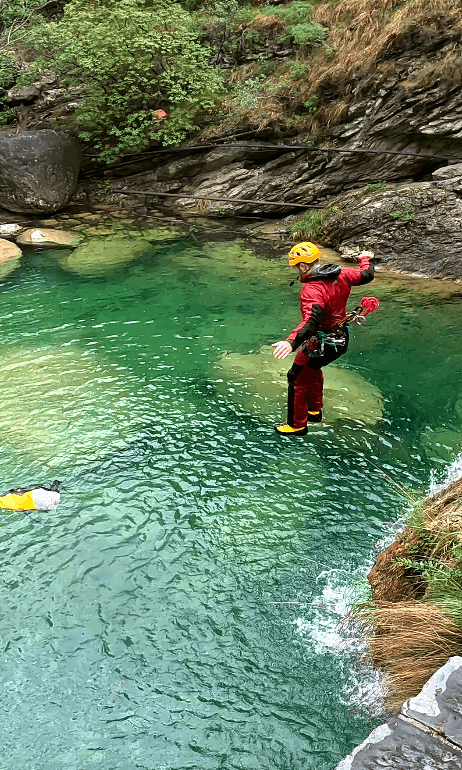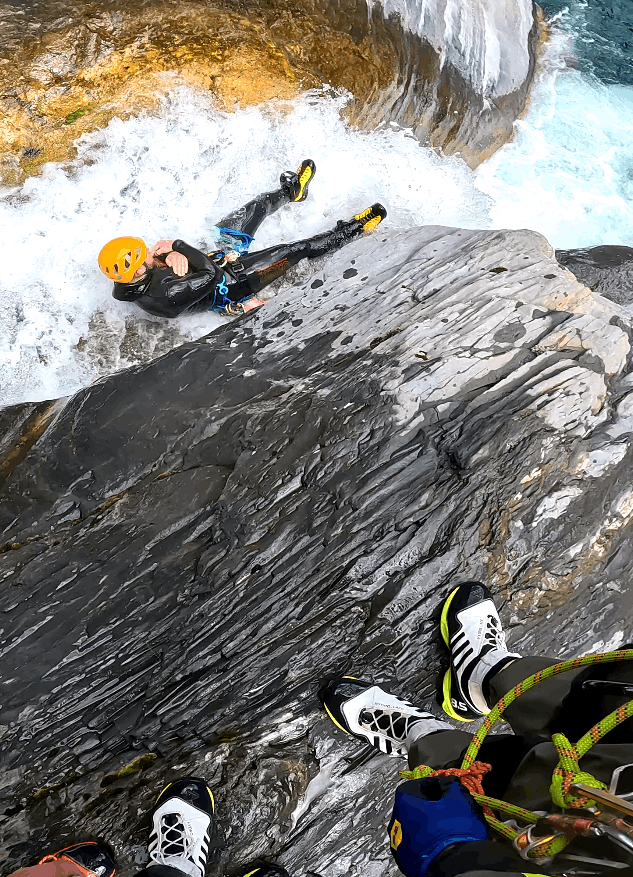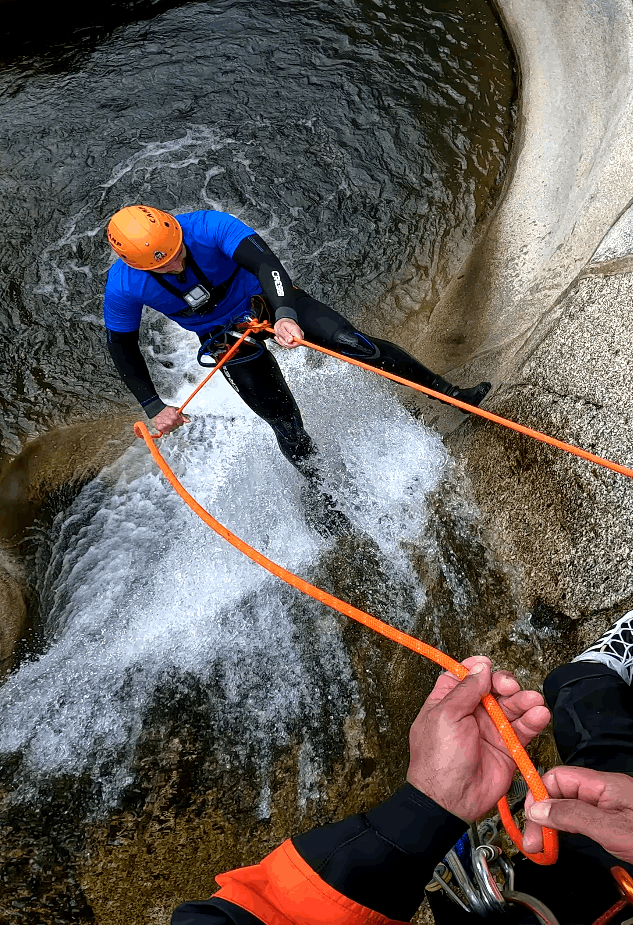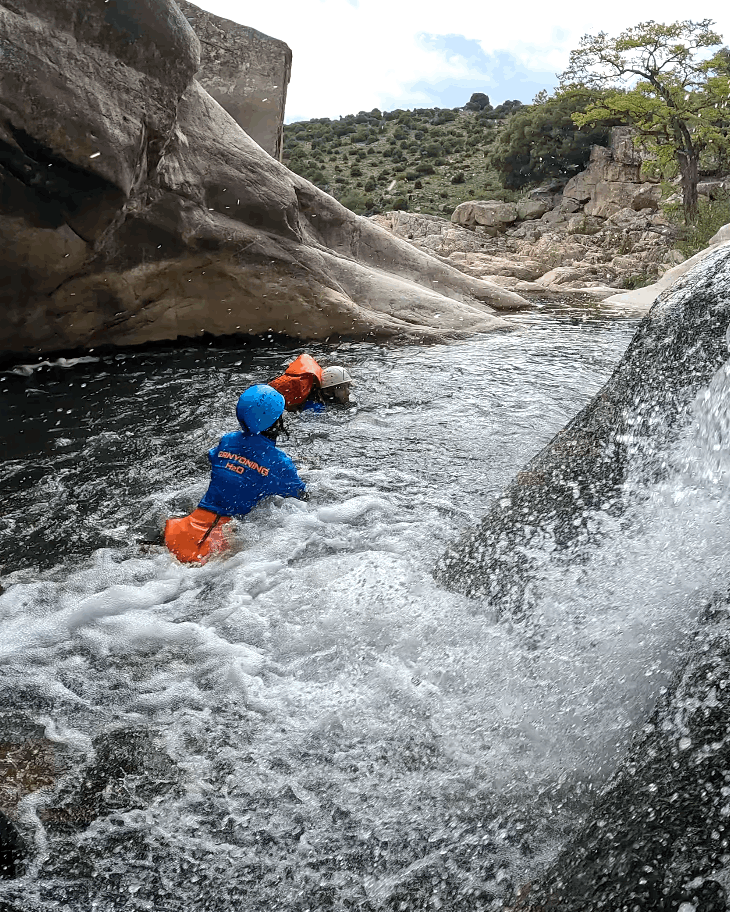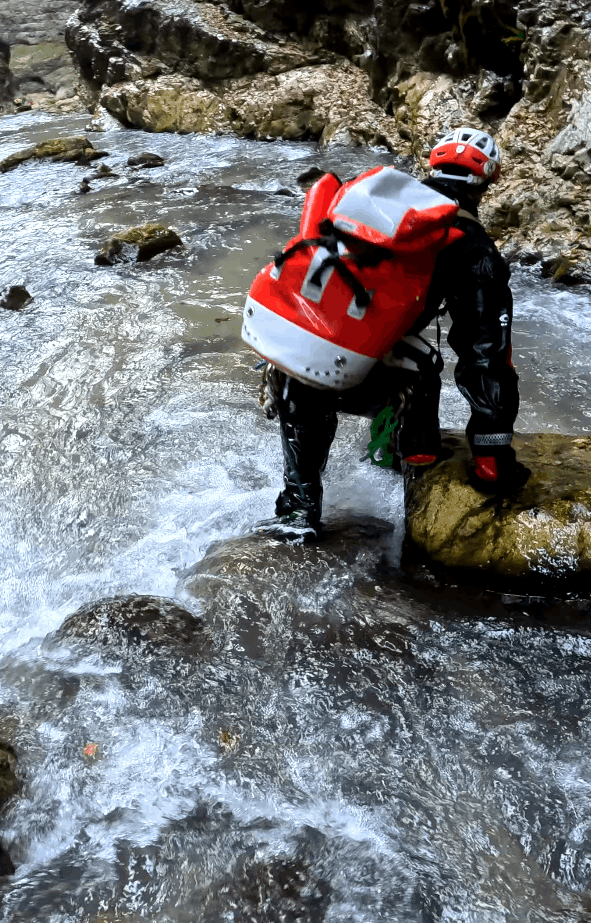
WHAT TO KNOW ABOUT PROGRESSION
Following the guide's instructions on how to move and how to behave is very important, ignoring them can be dangerous and cause accidents for you and for the other participants in the descent.
The progression:
The march. We all walk every day, taking thousands of steps, which is why simply "walking" seems natural to us and not worthy of attention. Walking in a stream, on stones and other wet surfaces, with the pressure of the water on your legs, wearing clothing and equipment that we are not used to, requires maximum attention, step by step. There is no rush, the speed of the group will be that of the slowest person, therefore:
• Do not jump from stone to stone or to overcome an obstacle, as this could cause a fall and accident. To overcome vertical obstacles where the use of a rope is not foreseen, you sit on the top of the obstacle and slide down gently, or proceed by declimbing. If you are not capable or feel unsure, ask the guide for help in overcoming the obstacle.
• Don't run, even if the riverbed allows it;
• We maintain a distance of about one meter from those in front of us;
• Do not proceed with the safety lanyards dangling from the harness, they must be attached to the material holder or to the main attachment of the harness;
